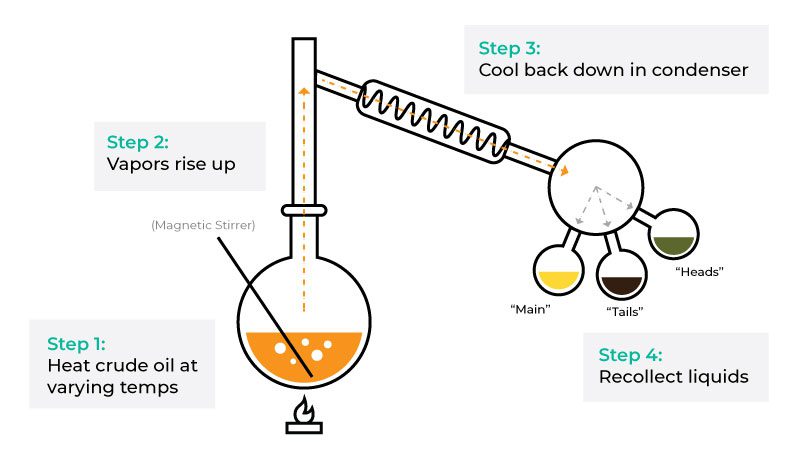Cannabis distillate was one of the first forms of cannabis extraction to go mainstream. Believe it or not, even today distillate is still the highest selling cannabis extract in recreational markets.
Despite its popularity, cannabis distillate has its fair share of haters as well. But is the hate warranted? There are lot of misconceptions around how distillate made, and the range of quality that can be produced.
So let’s explore the science behind it, and dive into how distillate is made.
What is Distillation?
Distillation is a technique used to separate compounds based on their distinct physical properties. These properties include melting point, boiling point, and crystallization. One of the most common distillation methods involves utilizing boiling points.
When dealing with heat-sensitive molecules (such as THC), processors often use Short-Path Distillation to separate the compounds.
Cannabis processors utilize short-path distillation to purify and isolate cannabinoids in cannabis extracts. This process results in a high-purity, superior quality concentrate that can be consumed as is, or used to create other products like edibles and infused pre-rolls.
Short-Path Cannabis Distillation
Short path distillation, also known as fractional distillation, produces high-quality cannabis distillate but has limitations in scalability and production capacity. In this process, a boiling flask heats crude oil, which is agitated by a magnetic stirrer.
Heat separates the compounds in the oil until they vaporize. The vaporized compounds rise and are then condensed back into a liquid using a condensing coil.
Cannabis oil compounds are separated into three different “fractions” (main, heads, tails), which are collected at various temperature points during distillation. As the temperature increases, each compound fraction evaporates, re-condenses, and is collected in a receiving flask.
When it comes to cannabis distillate, the fractions go as follows:
Main Fraction: THC and CBD cannabinoids
Heads Fraction: Terpenes and other high volatiles
Tails Fraction: High boiling point cannabinoids

An Adavanced Cannabis Extract
When distilling THC oils for purification, precise control over temperatures, pressure levels, and material input volume is essential. This ensures that the product achieves maximum purity without damaging or degrading the cannabinoids being extracted. This is a key to the high potency commonly associated with cannabis distillate.
Short-path distillation requires a skilled laboratory team with advanced knowledge of extraction. While it may have limitations in scale and production volume, this also allows for better quality control resulting in a higher quality product.
But not all distillate is created equally. While the process may remain the same, the input materials can vary. This is why many cannabis distillate products can be sold for a low price; the manufacturers are utilizing low quality, cheap input material, which allows them to charge less for the final product. It can be easy to notice a low quality cannabis distillate product, from the burnt taste and dark brown hue, to the constant clogging caused by low quality oil.
The Clear sources AAA Grade cannabis distillate, the cleanest, purest distillate available known for its golden yellow hue. Combined with our stringently sourced botanical terpenes, you won’t find a more flavorful, high quality cannabis distillate.

